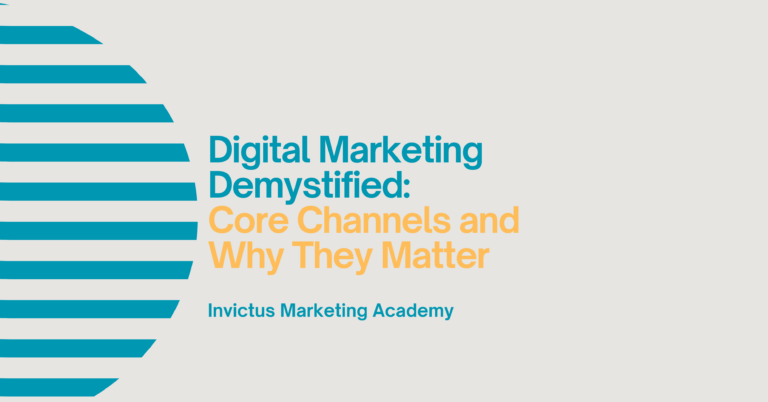Understanding Your Audience: Why Segmentation Still Matters
n a world of endless content, competitive noise, and shrinking attention spans, generic marketing simply doesn’t work. If your message tries to speak to everyone, it often ends up resonating with no one. That’s why audience segmentation remains a powerful and enduring principle in modern marketing.
Segmentation enables you to divide your broader audience into meaningful subgroups based on shared characteristics or behaviours. With this structure in place, you can tailor messages, products, and experiences that truly reflect what each group values — whether they’re first-time buyers, loyal repeat customers, or prospects still deciding.
This article explores why segmentation is still essential in a data-driven age, the main types of segmentation you can use, and how to build a practical segmentation strategy that sharpens your targeting and deepens customer relationships.
What Is Audience Segmentation?
Audience segmentation is the process of dividing a broader market into smaller, distinct groups that share common traits, needs, behaviours, or motivations. It allows marketers to shift from broadcasting a one-size-fits-all message to delivering relevant, targeted communication that aligns with each segment’s expectations.
Segmentation is not a trend — it’s a foundational principle that underpins personalisation, customer experience, and strategic marketing planning. It allows you to:
- Understand what drives different groups
- Prioritise high-value customers
- Refine messaging to match mindset
- Allocate budget and effort more efficiently
Whether you’re running an email campaign, planning a new product launch, or building long-term customer loyalty, segmentation gives you the insight to make smarter choices — and craft experiences that convert.
Why Segmentation Still Matters
Even with advanced tools like AI and real-time data platforms, segmentation remains the bridge between insight and impact. Without it, personalisation becomes guesswork and performance suffers.
Here’s why it’s still essential:
- Relevance increases response – People are more likely to engage when they feel understood. Segmentation helps tailor your messaging so it speaks directly to different groups’ needs, goals, or pain points.
- Efficiency improves ROI – By focusing your resources on segments that are more likely to convert or spend more, you reduce waste and improve your return on investment.
- Personalisation becomes scalable – You don’t need to write 1,000 emails for 1,000 people. Smart segmentation allows for tailored communication that feels personal — even when automated.
- Better product-market fit – Segmentation allows businesses to spot underserved groups, test niche offers, and identify gaps between customer need and available solutions.
- Informed innovation – By analysing how different segments behave, you gain insights into market trends, allowing you to adapt faster and stay relevant.
Ultimately, segmentation ensures that marketing is customer-led — not company-driven.
The Four Main Types of Segmentation
While there are many ways to slice your audience, most approaches fall into four core categories. Each type serves a different purpose and adds a different layer of insight.
1. Demographic Segmentation – Who your customers are
This is the most traditional form of segmentation. It uses basic identifiers such as:
- Age – Influences everything from tone of voice to platform choice (e.g., TikTok for Gen Z, Facebook for Boomers).
- Gender – Can affect product choice, messaging style, or aesthetic preferences.
- Income and occupation – Often linked to price sensitivity, brand loyalty, or value perception.
- Education or marital status – Useful for understanding priorities and decision-making behaviour.
Demographics provide a top-level filter — helpful when scaling broad campaigns — but they lack nuance. They work best when combined with behavioural or psychographic data.
2. Geographic Segmentation – Where your customers are
This segmentation type is based on physical location and is especially useful for:
- Localised marketing – Tailoring campaigns for specific cities, regions, or countries.
- Cultural relevance – Adjusting language, tone, or imagery to reflect regional identities.
- Seasonal campaigns – Varying product or service promotion based on local climate or events.
It’s essential for businesses with physical locations, as well as those operating internationally or across multiple markets with different habits and expectations.
3. Behavioural Segmentation – What your customers do
This data-rich approach focuses on observed actions and habits:
- Buying behaviour – Frequency, timing, and size of purchases.
- Usage patterns – How often and in what ways your product or service is used.
- Customer loyalty – Length of relationship, repeat behaviour, or advocacy.
- Engagement signals – Email opens, clicks, downloads, or time spent on site.
Behavioural segmentation is particularly effective in digital marketing because it allows for automation based on real-time actions. For example, you might send a discount to customers who abandoned their cart — or a thank-you reward to your most loyal buyers.
4. Psychographic Segmentation – Why your customers act
Psychographics explore motivations, values, and attitudes — helping you understand the emotional or lifestyle context behind decisions.
It includes:
- Beliefs and values – e.g., sustainability, family, independence, adventure.
- Lifestyle – Hobbies, routines, and purchasing rituals.
- Personality traits – Are they detail-oriented, spontaneous, introverted?
- Aspirations – What transformation are they seeking (status, freedom, confidence)?
Psychographics add depth and emotional intelligence to your strategy. When you understand what drives people, you can create stories, offers, and brand messages that resonate on a personal level.
Building a Segmentation Strategy: A Step-by-Step Guide
Effective segmentation doesn’t require a data science team — but it does require a structured, intentional approach. Here’s how to get started:
1. Define Your Objective
Start with the question: What are we trying to achieve with this segmentation?
Are you improving email open rates? Launching a new product? Retaining existing customers? Your goal determines what kind of segmentation will be most useful — and prevents you from collecting data without purpose.
2. Audit Your Data Sources
Gather what you already know from:
- CRM and purchase history – Who buys what, and when?
- Google Analytics – What pages or content attract different types of visitors?
- Social media insights – Who engages with different posts?
- Email platform metrics – Who opens, clicks, unsubscribes?
Don’t worry if your data isn’t perfect — patterns often emerge from even basic analytics.
3. Identify Useful Segmentation Criteria
Avoid superficial labels that don’t affect behaviour. Instead, look for:
- Traits that influence decision-making
- Patterns that affect profitability or engagement
- Differences that justify varied messaging or offers
For example:
- Segment by buying motivation — “price-conscious shoppers” vs “premium-seeking buyers”
- Segment by purchase cycle — “first-timers”, “repeat buyers”, and “dormant customers”
Start simple — then evolve as your insight deepens.
4. Label and Profile Each Segment
Give each segment a name and short profile that captures:
- What defines them
- What they want
- What messaging works best
- What platforms they prefer
Example:
The Fast-Decision Freelancer
Time-poor, values convenience, prefers mobile experiences, responds well to time-sensitive offers and simple pricing.
These profiles help marketing and sales teams stay aligned — and ensure campaigns are grounded in customer reality.
5. Test and Refine
Segmentation is not a one-off task — it’s an evolving process. As your audience changes, and as you gather more data, revisit your segments and refine your approach.
Use A/B testing, customer feedback, and campaign performance to validate your assumptions. If a segment underperforms, ask why. Are you misunderstanding their needs, or using the wrong channels?
Good segmentation evolves with your market — and gets stronger over time.
A Practical Example: A Meal Subscription Service
Imagine you run a healthy meal subscription brand. With segmentation, you might identify three core groups:
- Time-Poor Professionals
Want fast, nutritious food without the hassle of planning. Email campaigns focus on time-saving, with app-based ordering and free delivery. - Fitness-Focused Customers
Interested in macros, energy levels, and performance. Marketing focuses on protein content, training integration, and meal plans. - Budget-Conscious Families
Looking for value and variety. Offers include multi-meal discounts, family bundles, and recipe ideas to reduce food waste.
Each group gets a tailored journey — from ad copy and imagery to landing page design and post-purchase emails. This results in higher engagement, stronger loyalty, and lower unsubscribe rates.
In Summary
Segmentation is not just a technical tool — it’s a way of thinking. It encourages you to stop treating your audience as a crowd and start seeing them as individuals, each with their own needs, priorities, and potential.
By understanding your audience through thoughtful segmentation, you can:
- Communicate more effectively
- Sell more confidently
- Build deeper loyalty
- And create a brand that feels relevant in every interaction
The future of marketing isn’t mass messaging — it’s meaningful connection. And segmentation is how you get there.





